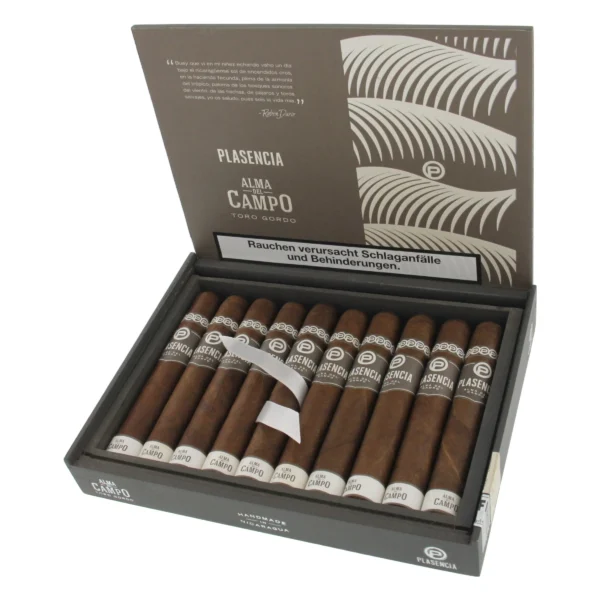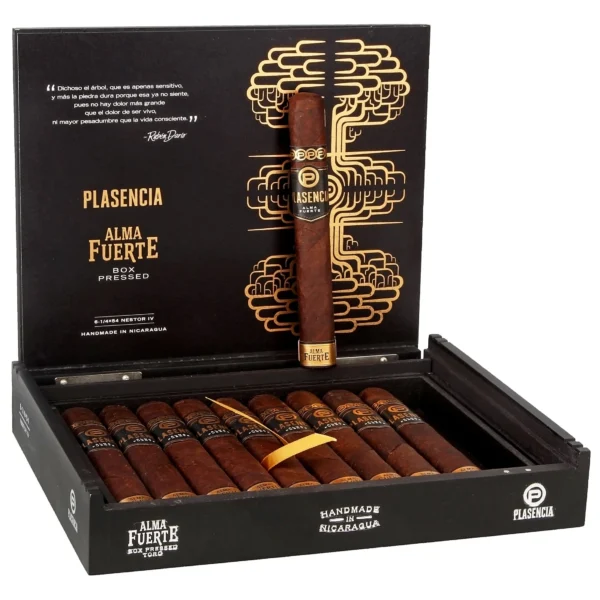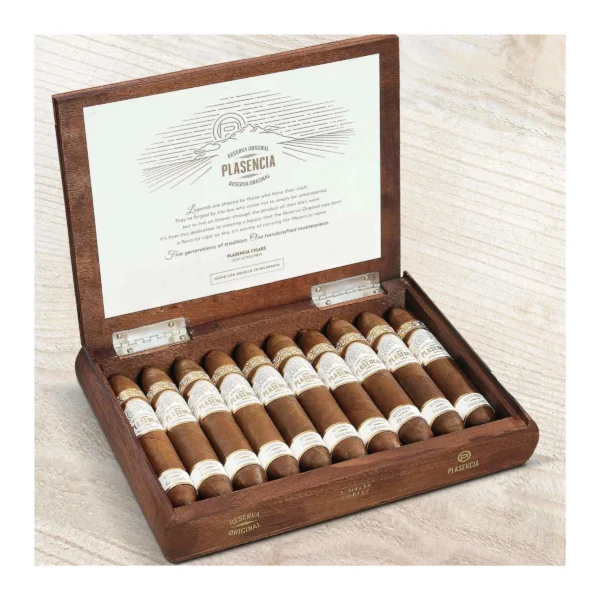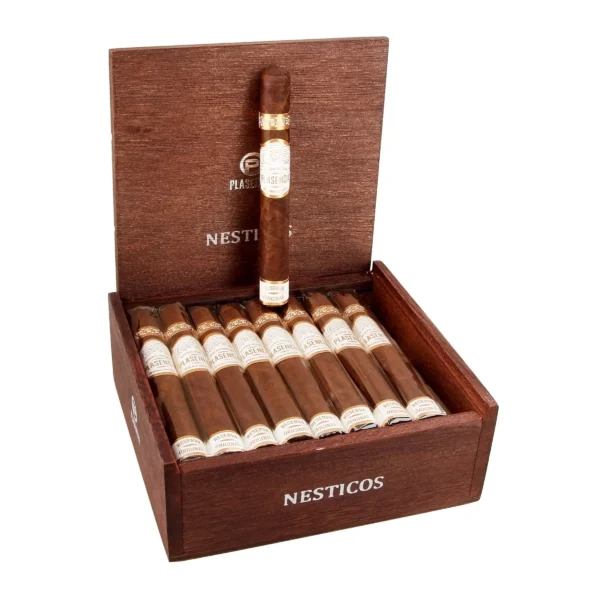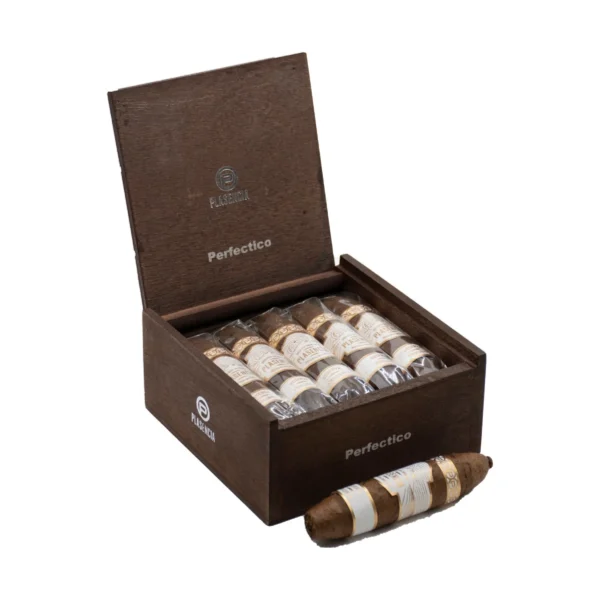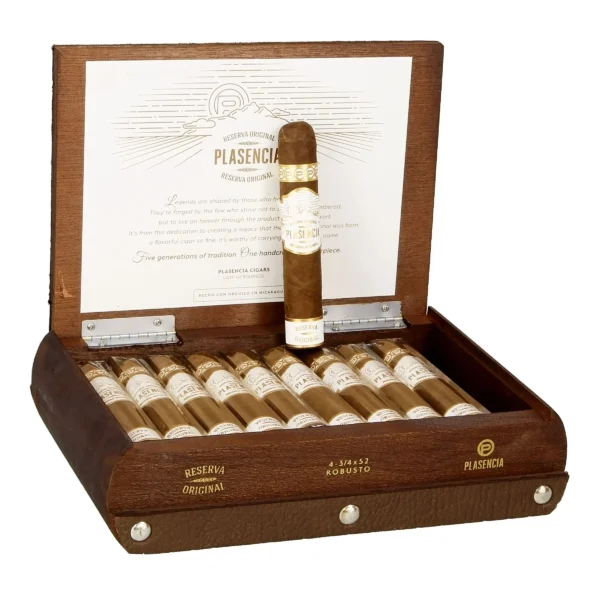Category
- ACCESSORIES(69)
- Arturo Fuente(17)
- Bolivar(14)
- CAO(4)
- Cohiba(18)
- Cuaba(7)
- CUBAN CIGARS(257)
- Cutters(12)
- Davidoff(17)
- Diplomaticos(2)
- El Rey del Mundo(4)
- Fonseca(5)
- Guayaberas(4)
- H. Upmann(19)
- Hoyo de Monterrey(16)
- José L. Piedra(8)
- Juan López(4)
- La Flor de Cano Cigars(2)
- La Gloria Cubana(7)
- LCDH Editions(27)
- Lighters(26)
- Limited Editions(10)
- Montecristo(25)
- NEW WORLD CIGARS(49)
- NON CUBAN(3)
- Partagàs(29)
- Perdomo(2)
- Quintero(8)
- Regional Editions(10)
- Regular Production(203)
- Remeo Y Julieta(31)
- Saint Luis Rey(2)
- San Cristóbal de La Habana(8)
- Sancho Panza(3)
- Single Cigars(35)
- Trinidad(8)
- Vegas Robaina(6)
- Vegueros(5)
Filter by price
Rating
Showing 1–16 of 17 results
Plasencia cigars
The Plasencia family began growing tobacco in Cuba in 1865 and later had to flee to Nicaragua and Honduras before the socialist revolution. There they successfully established cigar production alongside growing raw tobacco. With factories in both countries and 6,000 employees, Plasencia now produces 40 million cigars annually. Since 2015 they have also been marketing their own cigar brands, which benefit from the expertise they have accumulated over five generations.
Plasencia cigars
The Plasencia family began growing tobacco in Cuba in 1865 and later had to flee to Nicaragua and Honduras before the socialist revolution. There they successfully established cigar production alongside growing raw tobacco. With factories in both countries and 6,000 employees, Plasencia now produces 40 million cigars annually. Since 2015 they have also been marketing their own cigar brands, which benefit from the expertise they have accumulated over five generations.
Plasencia – one of the most important families in the industry
The story of the Plasencia SA company and the family behind it is the story of an endless struggle. Against twists of fate and adverse circumstances to achieve great success and greatness. Like many others, a man named Santiago Plasencia leaves his homeland in search of better living conditions. He is accompanied by two of his brothers, while the families remain behind under the care of another brother. The travelers eventually land in Cuba and settle in the Vuelta Abajo region . They had heard a lot about this fertile area and wanted to build their new life here.
After a few years they were able to lease a farm with the sonorous name El Corojal from the Cifuentes family , who owned the Partagas cigar factory . At that time the Plasencias were not yet making cigars, but growing tobacco, which was then used as wrapper . In the meantime Santiago Plasencia had also had a son, Sixto Plasencia , who at the age of 14 was rediscovering his Spanish origins. After this trip he joined the small family business in 1890 and worked on the farm. In 1920 his son Sixto Jr. was born, the third generation entered the scene. When he grew up, Sixto Jr. founded his own company, the Hijos de Sixto Plasencia , together with his nine siblings (!) . Everything was going well. In 1949 his son, Nestor , was born and the business also developed as desired. But then, in 1959, the Cuban Revolution shook the country and things began to change…
Political turmoil
The Plasencias’ neighbors fled, including well-known names such as Carlos Torano and Julio Eiroa . Sixto Jr. did not expect that his family and their business would be affected by these developments, but he was wrong. On October 3, 1963, troops occupied the Plasencias’ property, with the only exception of their house. Now, however, it was clear: they would not be able to stay here. But emigrating or escaping from Cuba was not so easy. The preparations took several years, but in May 1965 the time had finally come. The plan was to flee to Jamaica , where they would have the opportunity to work on a tobacco farm. The route was to take them via Mexico on short-term visas and from there to Jamaica. But when he arrived in Mexico, Sixta Jr. was informed that the tobacco farm they were supposed to be heading to was bankrupt.
Failed Emigration
Not an easy situation for the family, especially as they only had $100 in cash. Julio Eiroa , who was now living in Honduras himself , obtained visas for the trip to Honduras, where Sixto Jr. was offered two jobs within a few hours! But Honduras too was just a stopover; in 1967 the opportunity arose to work on the Oliva family farm in Nicaragua, so off to Nicaragua it was! Nestor married there in 1969 and bought his own farm with his father in 1971. Years of good economic development followed, while the political climate worsened. Having become cautious after their experiences in Cuba , father and son leased a farm in Honduras in 1978/79 alongside their farm in Nicaragua , and when their property in Nicaragua was confiscated, they left the country and went to Honduras.

































